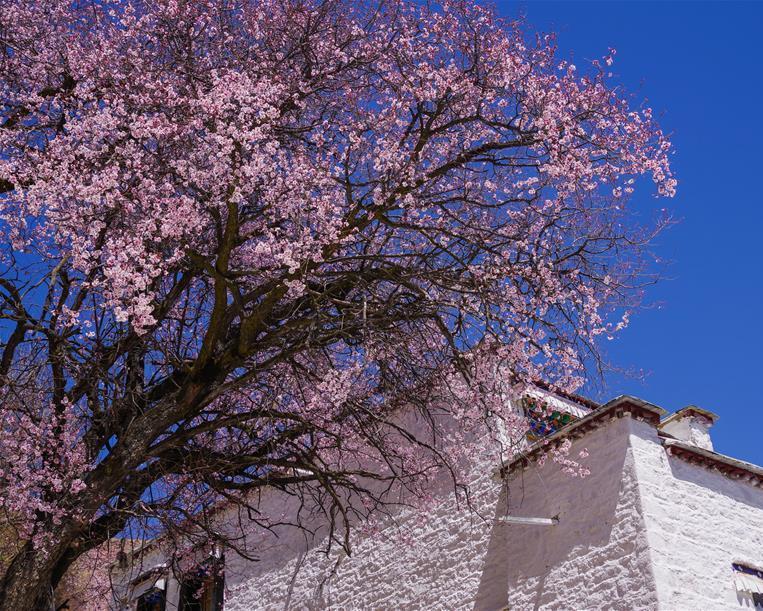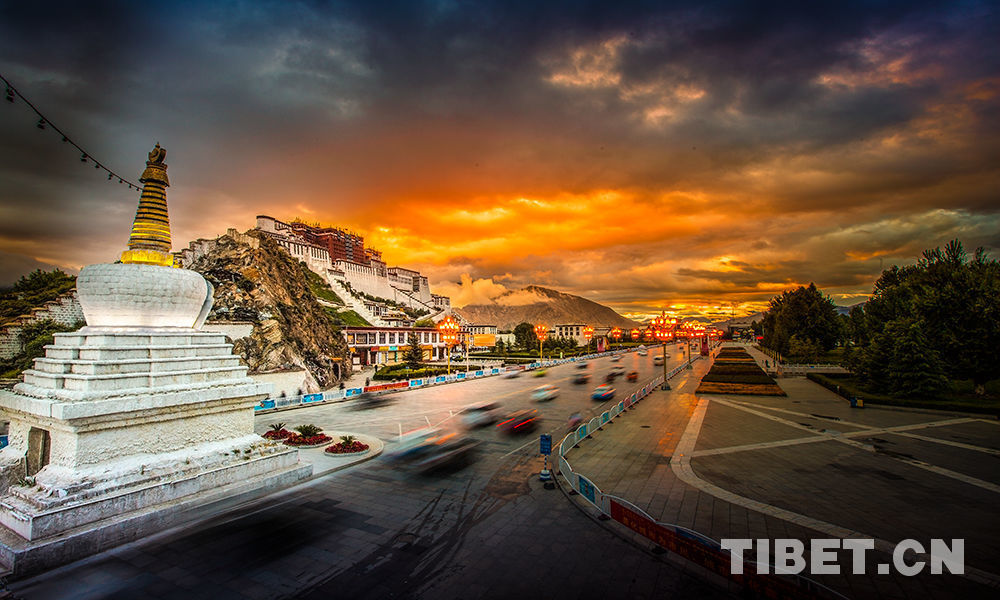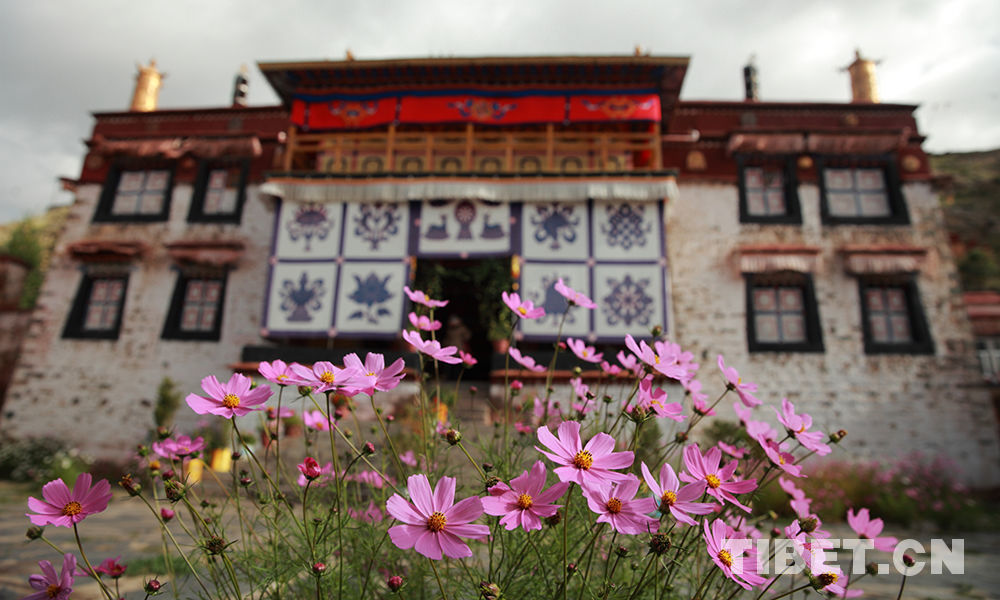Has the Dalai Lama really "retired" from political power?
It has been more than one year since the Dalai Lama announced his "retirement".
The past year saw the Dalai Lama claiming everywhere that he has transferred his political power to the "elected leader" by the Tibetan community in exile, and he also expressed deep repentance for being keen on politics over the past years.
"Over the past decades, I have been repeatedly telling others that a religious leader should be separated from a political leader. But when I said this, I was actually a religious leader and a political one at the same time. This is contradictory to what I said and sounds hypocritical", he said.
The Dalai Lama even swore not to involve in politics any more, and he would follow the Buddha in the rest of his life.
If a person who has been the head of separatist political group living on scheming "Tibet independence" suddenly wanted to completely cut his ties with his clique and its separatist activities, how would it be possible?
Let the facts speak for themselves.
Firstly, let’s look at the designation of the political status of the Dalai Lama. Last March, the Dalai Lama called for amending the "Constitution of the government-in-exile" while declaring his "retirement" and "rescinding all political and administrative work related to his title". However, this constitution approved finally by the Dalai Lama himself has not only not weakened his political power, but more strengthened and centralized it. It openly announced that "the fourteenth Dalai Lama is the supreme leader and mentor of Tibetans", and stipulates that the Dalai Lama still enjoys three powers after the "retirement".
The first power is to guide, teach and supervise the protection and development of Tibetans’ wellbeing, moral ethics, religions and culture, as well as the "Tibet issue". According to the Dalai Lama, the so-called "Tibet issue" is to achieve the "genuine autonomy" of six million Tibetans. So, this is certainly not a moral or religious issue, but a sheer political issue .
The second power is that the Dalai Lama may, on his own or upon request supervise the "Parliament" and the "Kashag" on important affairs related to Tibetan ethnicity, society, politics and religion. Obviously, it is not only guidance on regular religious service, but provides the Dalai Lama with the full authority to manipulate the political and religious power of the "Central Tibetan Administration" out of his own will.
The third power is to meet with international dignitaries to resolve the "Tibet issue" on behalf of the "government-in-exile" and the Tibetan people, and continue to appoint representatives and special envoys of offices in other countries. That is to say, the Dalai Lama still takes charge of international activities and major personnel appointments of his clique.
On November 3rd, 2011, after "proudly" talking about the meaning of his win as the new leader of "Tibet-government-in-exile" in his "testifying" on the Tom Lantos Human Rights Commission of U.S. Congress, Lobsang Sangay said, this does not mean that the Dalai Lama has retired, he is still the "spiritual leader" of the Tibetan people and the most "respected" leader, and our "Charter" also recognizes this. It shows that he is just a doll under the control of the Dalai Lama.
Then let us look at the Dalai Lama’s attitude toward the separatists’ political activities that his clique is now engaged in. On July 9, the Hindu published an exclusive interview with the Dalai Lama on his birthday. In the interview, the Dalai Lama showed no interest in religious issues, but kept talking about "genuine autonomy" and "greater Tibet", which have been completely denied by the Chinese government as they are virtually political views of "semi-independence" or "covert independence ". What’s more, the Dalai Lama also showed his dissatisfaction with the India government’s "prudent" attitude toward China in the late 20th century and early 21st century. Then he instigated the Indian government to adopt "a more realistic stance" to support his separatist political activities.
On the issue of "self-immolation", the Dalai Lama once again claimed "I do not want to create some kind of impression that this is wrong." In the previous May, the Dalai Lama claimed that China was to send Tibetan women disguised as Buddhist followers to coat poison in their hair and to cheat him to touch it. This gimmick brought about much mockery from the international media.
If we check Dalai Lama’s speeches on various occasions for more than a year, we can find that his enthusiasm of attempting to incite discontent and create turbulence in Tibet had never diminished. The only change, if any, is that they were even more extreme, violent and evil.
In order to avoid treating the Dalai Lama unjustly on his "efforts" to promote the "Tibet issue" internationally, the writer collected the Dalai Lama’s international activities this year based on media of the Dalai group such as the Voice of Tibet and other western media.
In April, after the Dalai Lama arrived in North America, He first organized some anti-China congressmen from Canada to hold the "World Parliamentary Convention on Tibet". Then he fled to the United States and said in Hawaii that the "Chinese Communist Party invaded and ruled Tibet with a heavy hand and forced him and countless Tibetans to flee to India; in Los Angeles, he further attacked the Chinese government that it took hard-line control of the monasteries in Tibet, carried out patriotic education campaign forcibly and infringe upon ethnic Tibetans’ rights to learn their own language.
Furthermore, the Dalai Lama convened heads of the anti-China forces such as the "East Turkistan" and the "Democratic Movement" in the US, and gave face-to-face guidance to these separatists on tactics of separatism, saying that as a senior in terms of the exile experience, he advised them to make long-term and arduous preparations.
He claimed in an interview with the CNN that he supported the "protest principles of the 'Arab Spring'"; In an interview with the BBC, he insulted and attacked the Chinese leaders so fiercely that even the reporter commented that the Dalai Lama was too excited and outraged when it came to this that his behavior was least like that of a Buddha over the past two decades, which the reporter had never seen in any of his interviews with the Dalai Lama.
Of all his activities in North America for half a month, the Dalai Lama had attended nearly a hundred activities,large and small, 90 percent of which were involved in politics.
After that, the Dalai Lama fled to Austria in May to participate in the "International Campaign for Tibet" in Europe and attended more than 20 activities including give public speeches, of which only two are related to religion .
In June, the Dalai Lama went to the United Kingdom again and held over 30 activities, of which only three were religious ones, and the rest of them were all political incitement.
It is obvious that the Dalai Lama cannot live even for one day without launching political separatist activities, but his ability and competence have been questioned. A journalist with The New York Times said that he was only an awkward political strategist and he should have stopped his Hollywood-style strategy ten years ago.
The Dalai Lama’s announcement of "retirement" had once brought so much joy to some western political leaders. They claimed that the Dalai Lama had accomplished a pioneering work of separating religion from politics, and became a purely "religious leader". Thus, the western politicians think they are now justified in meeting this religious leader, regardless of China’s protests. Unfortunately, the collusion between the Dalai Lama and the "government-in-exile" is so tight that they even do not want to cut their connections in public, without consideration of his western masters’ face .
On March 10 this year, the Dalai Lama still participated in the first "rebellion anniversary" rally after his "retirement", openly implying that his status can not be replaced. What’s more, the Dalai Lama backed the new leader of the "government-in-exile" during his speech. He did not even oppose when the new leader clamored that Tibetan people should participate unitarily and extensively in the struggle to resume "Tibet's independence" on the spot. Instead of opposing this act, the Dalai Lama met with the media immediately after the rally and expressed his thanks to all supporters of the world, saying that from a historical perspective, Tibet has the right to fight for its independence. ‘The Middle Way Approach’ he mentioned is due to the current predicament and a way to resolve this dilemma. Therefore,it is reasonable to put forward the proposal of "Tibet independence", which is to say that the so-called "Middle Way Approach" is virtually the same with "Tibet independence".
When the Dalai Lama visited his "friends" in the United States and European countries, he introduced the new leader of the "government-in-exile" to all kinds of people around him.
Recently, the new leader of the "government-in-exile" visited Australia and claimed that the exiled government shoulders great responsibility, for which he often asks for advice from the Dalai Lama, who is very willing to help and support him. We hereby see strange phenomenon: while some western politicians are trying to find a good excuse to separate the Dalai Lama from his "government-in -exile", the Dalai Lama himself energetically clings himself to it. Maybe that is the reason why western politicians in recent years met with the Dalai Lama in "private", "informal" manner and on "religious" occasions!
There is a saying of Mencius, a Chinese philosopher who lived from 372 BC to 289 BC, and was regarded as the most famous Confucian after Confucius himself, "Wasn’t it equally egregious to murder with a stick or a sword?" Thus the same simple truth is that no matter under which circumstance the western politicians met with the Dalai Lama, the political activities were not changed, which have done harm to China’s sovereignty and national interest, as well as the bilateral relations between the two countries.
It is vital for the Dalai Lama to stick to its separatist political stance and activities in order to maintain his dictatorship and autocratic position and the survival of his political clique. And for some western forces, it is the need to contain and split China. Therefore, it is only a self-deception for the Dalai Lama to "depoliticize" everything, which would only ends up making him look even more ridiculous!
Your Comment
Name E-mailRelated News
-
;











